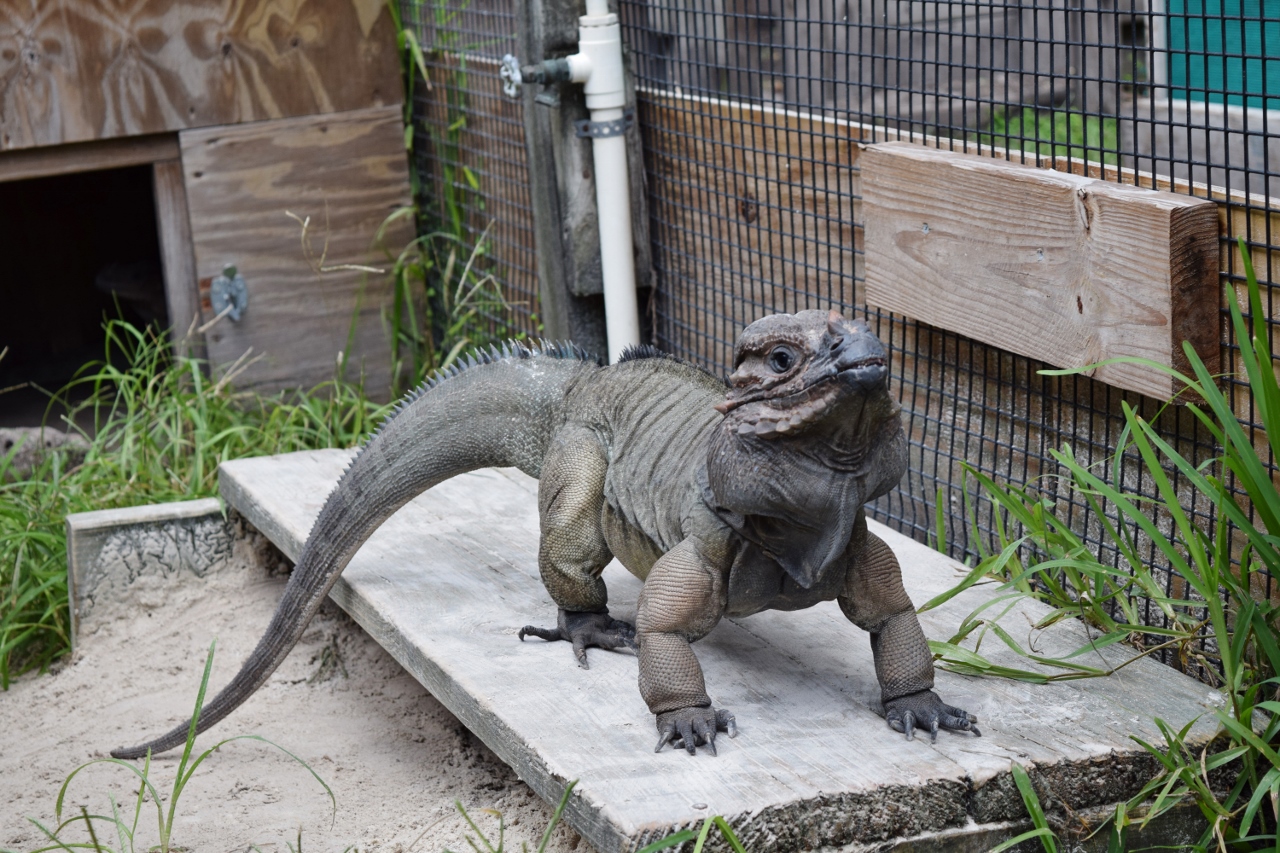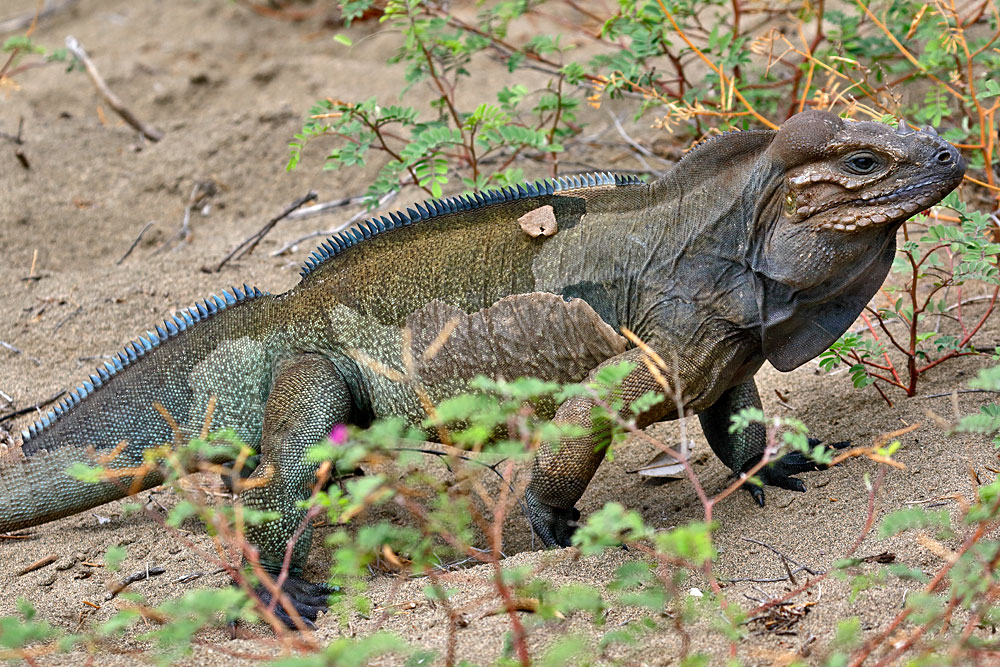


Populations in Haiti are even more endangered due to the deforestation and human clearing practices. There are moderately dense populations in the southeastern region of Haiti and its offshore islands including the saltwater lake of Etang Saumatre. Rhinoceros Iguana at the Frankfurt Zoo.Ranging throughout Hispaniola, Haiti and the Dominican Republic Rhinoceros Iguana populations are stable only on Isla Beata and the extreme of the Barahona Peninsula inside Parque Nacional Jaragua. Females have smaller pores and shorter crests than the males, making the animals sexually dimorphic. Males of this species, like other species within the Genus Cyclura, are larger than females, and have more prominent dorsal crests and "horns" in addition to large femoral pores on their thighs, which are used to release pheromones. Males possess an adipose pad in the form of a helmet on the occipital region of the head, and a large dewlap. Thomas Wiewandt, who spent an extended period on Mona Island studying Cyclura cornuta stejnegeri, suggested that the horns, along with lateral spines and prominent parietal bulges, function as protective armor against sharp rocks or as defensive tools to facilitate the escape of males from the grasp of one another. These iguanas are characterized by the growth of bony prominent tubercles on their snouts which resemble horns. Most adults weigh 4.56 kilograms (10.1 lb) to 9 kilograms (20 lb) Their color is a uniform gray to brown drab. A crest of pointed horned scales extends from the nape of their neck to the tip of their tail. Male Rhinoceros Iguana, Pedernales Province, Dominican Republic, 2007.The Rhinoceros Iguana, like other members of the genus Cyclura, is a large bodied, heavy headed lizard with strong legs and a vertically flattened tail. There are two subspecies of Cyclura cornuta, the Mona Ground Iguana (Cyclura cornuta stejnegeri) and the Navassa Island Iguana (Cyclura cornuta onchiopsis), although the latter species is believed to be extinct in the wild. The species was first identified by Pierre Joseph Bonnaterre in 1789.

The Rhinoceros Iguana's specific name, cornuta, is from the Latin word cornutus, meaning "horned" and refers to the horned projections on the snouts of males of the species. The generic name (Cyclura) is derived from the Ancient Greek cyclos meaning "circular" and ourá meaning "tail", after the thick-ringed tail characteristic of all Cyclura. The Rhinoceros Iguana is a species of lizard belonging to the genus Cyclura. We have the best guarantee in the industry, Guaranteed live arrival, 30 day exchange policy and one year health guarantee. We are an approved breeder by the ZAA (Zoological Association of America.) Cyclura Rhino Videos The general excepted belief is that Rhino Iguanas are the hardest to tame of the Cyclura Iguanas making them difficult as pets as they become bigger and stronger. If your are looking for a pet, Typically the best practice is to either get an adult that is already tame or buy a baby from a breeder that is young and then invest the time to make him a good pet. He died back a few hours ago from a non-dieses related death. There were newspaper articles about him where he was named (Gorgeous) at the time. Rhino Iguanas are Big, Bold and the Most prehistoric looking of the Cyclura Iguanas. They are a very heavy bodied animals weighing well over 20 Lbs and up to 25 Lbs for some large males. They are a very long lived animal with life spans above 60 years and up to 80 years. I had a male (MR Blue) as we called him who came out of Life Fellowship Church. They obtained him from Bill Haast from the Miami Serpentarium Laboratories after they closed. Rhino Iguana (Cyclura Cornuta) (Rhinoceros Iguanas)


 0 kommentar(er)
0 kommentar(er)
